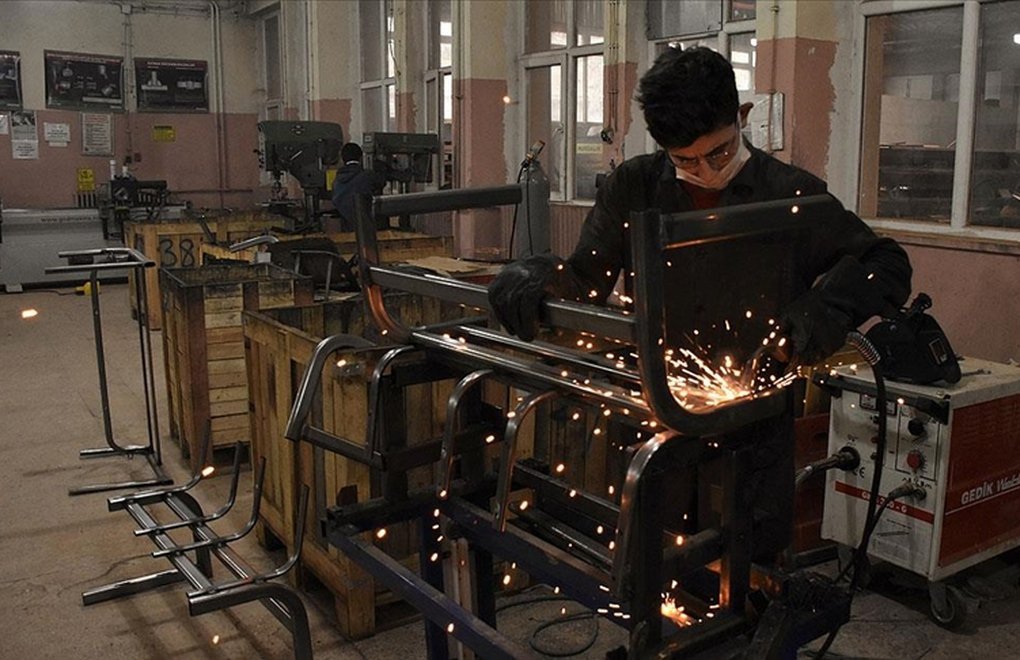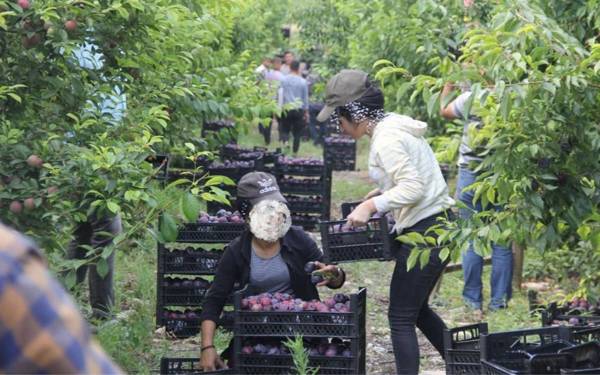The number of apprentice and semi-skilled workers at Vocational Training Centers was 1.2 million at the end of last year, over seven times higher than the previous year, according to National Education Ministry figures.
The centers are educational institutions where high school-level students work at businesses three or four days a week to earn a vocational degree.
In the first three years, the students work as "apprentices" and earn 30 percent of the minimum wage, and they earn half of the minimum wage in their senior years. The government pays the salaries.
Schools' revenues from selling the products made by students also rose significantly, from a turnover of 200 million lira in 2018 to 2 billion lira in 2022, according to the minister (1 US dollar = 18.79 Turkish lira).
While the minister praises the practice, saying students support their families, such a high portion of students being employed raises questions about child labor.
According to the ministry, there are 6.5 million students in secondary education in Türkiye, with 4.09 million at general high schools, 1.83 million at vocational schools and 617,000 at imam-hatips, or religious vocational schools. This means about 18 percent of all high school students and three-quarters of vocational school students in the country are employed.
"Full-time child labor"
Critics argue that vocational education centers legitimize child labor, enabling businesses to take advantage of the economic crisis.
Hacer Foggo, coordinator of the main opposition Republican People's Party's (CHP) Poverty Solidarity Office, told the daily Cumhuriyet, "This is a practice of full-time child labor. Even though the employment of workers under the age of 18 is banned by laws, with this practice, the employment of children aged 14-15 is legitimized."
There were about 720,000 child workers aged between 15 and 17 in Türkiye in 2020, according to the most recent Turkish Statistical Institute (TurkStat) report, which doesn't cover the number of employed vocational training center students.
Over 45 percent of the children were employed in the service sector, 23 percent were employed in the industrial sector and 30 percent were employed in the agriculture sector.
At least 64 child workers were killed on the job last year in Türkiye, and more than 550 have been killed since 2013, according to the Health and Safety Labor Watch (İSİG), a group monitoring workers' deaths.
Low-income families
The vocational centers are encouraged by school administrators, especially in low-income neighborhoods, Foggo noted. "The ability of the child, the profession they want, their dreams about the future don't matter. Because children live in poverty, they are steered toward these centers.
"Children are used as cheap labor and the business that the ministry signed a protocol with makes unearned income. This is a system that will completely wipe out vocational schools in the future.
"Unfortunately, families' deep poverty has been turned into an opportunity and an army of child workers has been created." (VK)







